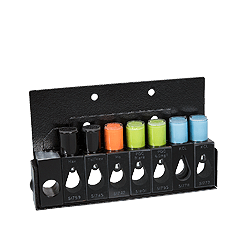 |
Stray light is one of the most important factors that can influence photometric accuracy and precision. The procedure for stray light testing is currently of high interest and widely discussed, as the U.S. Pharmacopeia introduced a new chapter on ultra-violet visible spectroscopy and adapted the existing test for stray light.
The instrumental performance is the main factor directly affecting the accuracy and repeatability of the measurements. For critical UV/VIS measurements, especially in clinical, pharmaceutical, or industrial quality control, it is crucial that the instrument performs according to specification. In laboratories working according to pharmacopeia regulations (e.g., USP or Ph. Eur.), it is important that instrument performance is monitored regularly, and documentary evidence is present.
This white paper discusses the origin and accurate measurement of stray light. Methods for measuring stray light according to the current and previous versions of the U.S. Pharmacopeia are compared, and the advantages of the new test are highlighted. Furthermore, automatic measurement of important performance verification tests, in addition to stray light, is discussed.
Table of contents:
- The optical performance of a UV/VIS Spectrophotometer
- Performance verification tests assess the quality of measurements
- What is stray light?
- How is stray light measured?
- Specific Wavelength Method (SWM)
- Solution Filter Ratio Method (Melienz) (SFRM)
- Assessment of the SWM and SFRM methods
- Stray light value-correlation between the SWM and SFRM values
- Materials for stray light test in different wavelength ranges
- Automatic determination of optical performance parameters including stray light





